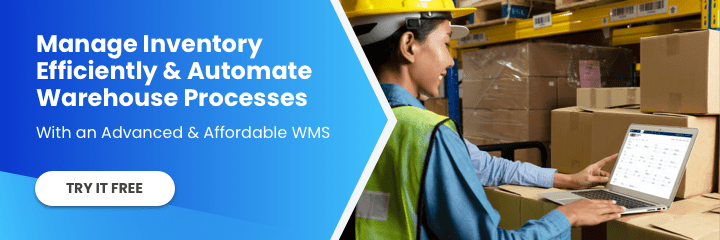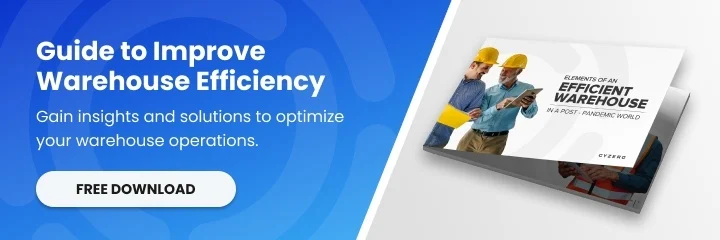Technology has made it easier to start a new business by lowering barriers to entry, also known as startup costs. As a result, industries with already low barriers to entry have been saturated with companies that have commoditized services.
Download Free Guide: 7 Technologies That Will Change the Warehouse
This has affected industry profitability by encouraging a competitive strategy based solely on pricing. For companies that do not have a solid business strategy, this has triggered a race to the bottom as they try to compete by continuously lowering prices.
Having partnered with hundreds of companies in the logistics industry, we have seen first-hand that profit erosion and service commoditization are affecting small and midsize logistics companies alike.
This is true across all segments, including ocean, air, and ground freight transportation companies, freight forwarders, NVOCCs, distribution centers, custom brokers, carriers, and more. Yet, some companies have been able to avoid the price competition.
As a result, we want to share five elements that small and mid-size logistic leaders have used to develop a competitive business strategy that has allowed them to differentiate from competitors, avoid service commoditization, and increase business profitability.
Core Values and Core Purpose
The Core Values and Core Purpose of a company are critical anchors of success. Core Values are the guiding principles of a company and dictate the acceptable behaviors and actions of its employees and leaders. These values provide a framework for everyone in the organization to discern right from wrong.
Core values provide organizations with a unique identity, something critical in shaping the brand, culture, and uniqueness of a company. They are also a critical component of an effective recruitment process as they allow you to attract and hire prospects that align with your company’s culture, ensuring a cultural fit.
While the Core Values are the guiding principles, the Core Purpose is the company’s soul. The Core Purpose answers the question “what is the reason for the organization existence” – other than generating profits.
As put by Jim Collins and Jerry I. Porras in a Harvard Business Review article, “The core is the organization’s reason for being; An effective purpose reflects people’s idealistic motivations for doing the company’s work.”
Research has shown that if companies can ignite and capture employees’ hearts and motivation, they will give you 40% more discretionary effort, in addition to better customer service and employee retention.
A Strong Business Differentiator
A key aspect of outperforming the competition is your ability to differentiate.
Michael Porter, father of modern business strategy and one of the world’s most influential business thought leaders, said, “A company can outperform rivals only if it can establish a difference that it can preserve.”
To do this, you must first understand your closest competitors, answering questions like who they are, what services they provide, and what market segments they serve.
Once you have a clear idea of the competition, put together a team of people (preferably critical thinkers) and have brainstorming sessions about the best possible ways to differentiate your company from the competition. Focus on the things that they won’t be able to easily replicate.
If it takes your company years to develop such a differentiator, perfect! It will take your competitors the same (or more). As long as you keep evolving, you will be the lead car, and the competition will always try to catch up.
By creating a strong differentiator, you will also create a unique value proposition that will tell your customers why they should choose you over your competitor.
Create a Niche and Focus
In the typical small and medium-sized business environment, it’s believed that every business opportunity that knocks on the door and leaves profit on the table should be taken. Although most believe this is true, many business strategists agree that this is not a good business practice and even less of a good business strategy. A better idea is to create a niche and focus 100 percent on it.
When creating a niche focus, be specific, specialize in a market segment, industry, service, or product, and become the leading authority.
For example, your business could focus on warehousing and managing orders for e-commerce websites or a freight forwarder that specializes in moving X hazardous material to X country or region. By doing so, you not only create a niche and differentiate from the rest of the competition, but you also become a leading expert—and everyone prefers to do business with the expert.
By focusing your business you will realize other benefits like increased efficiency, reduction in errors/mistakes, (resulting in happier customers and increased customer retention), and a more focused marketing strategy.
However, be aware that creating a niche requires some trade-offs. It may be hard to remain committed to your new focus when a new opportunity knocks on your door. Equally important as knowing what to focus on is knowing what not to focus on. Avoid temptations.
Operational Effectiveness vs. Strategic Positioning
Often leaders believe that operational effectiveness can lead to a sustainable competitive business strategy. Operational effectiveness is doing the same things that your competitors do but better. If you decide to take this route and differentiate your business, be aware that, at some point, the competition will catch up with you.
On the other hand, a truly differentiated competitive strategy focuses on strategic positioning, which means doing things differently to deliver superior value and create a unique value proposition for customers.
Every company is unique, and even small and mid-size logistic organizations can create strong differentiators. You just need to be open-minded and willing to go through the cycles of innovation—trial and error.
You must be willing to try new ideas, seeing the innovation cycle as an opportunity and not an expense. Be open. Invest in innovation and encourage and empower people to try new ideas and technologies.
People
It doesn’t matter how well-planned your competitive business strategy is – if you cannot execute it, you will not succeed. And for that, you need to hire and retain the best people.
It will be impossible to cover this topic in a short blog, but we will be dedicating more blogs to this topic soon. For now, focus on three things: 1) understand that people are critical to the success of your organization, 2) hire the right people for the right seat, and 3) retain them.
Hiring in a rush is one of the most common recruitment mistakes. Take time to truly understand the organization’s needs and generate the job description and requirements that meet those needs.
Then, clearly outline the company’s core values and the skills required to execute the job. With these critical pieces of information defined and documented, you will be able to hire the right person for the right seat. This means that you hire someone who shares your company’s principles and values (a cultural fit) and also has the skills required to execute the job.
After you have hired the right person, then your job is to retain them as long as possible. Research shows that turnover costs range between 30-50 percent for entry-level employees, while mid-level employees can pay as much as 150 percent of their annual salary.
If you are committed to building a winning logistics company, you must clearly define your business’s core values and focus, differentiate your business model, create a niche (and focus on it), strategically position your company, and hire and retain the best people. To truly succeed and avoid service commoditization and competing on price, you must embrace these elements.
You are now armed with the five secrets to developing and executing a winning business strategy, and I look forward to seeing your future success.
To learn about warehouse technology trends, follow us on LinkedIn, YouTube, X, or Facebook. If you have other inquiries or suggestions, please contact us here. We’ll be happy to hear from you.












